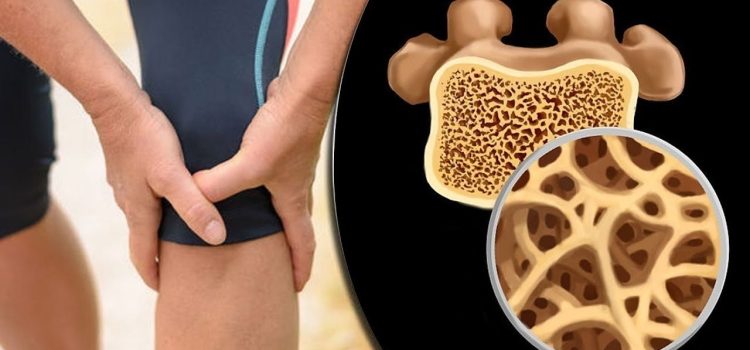
Osteoporosis, a condition characterized by weakened bones and an increased risk of fractures, continues to be a significant public health concern, particularly among older adults. Recent advances in research have provided new insights into the prevention, diagnosis, and treatment of osteoporosis, offering hope for improved bone health across populations. This article delves into the latest findings and their implications for managing this pervasive condition.
Understanding Osteoporosis
Osteoporosis is often referred to as a “silent disease” because it progresses without symptoms until a fracture occurs. The condition is marked by decreased bone density and structural deterioration of bone tissue, leading to fragile bones. The most common sites for osteoporotic fractures are the hip, spine, and wrist.
The Importance of Bone Health
Bone health is crucial for maintaining mobility and quality of life, especially as we age. Healthy bones are dense and strong, capable of withstanding daily activities and minor injuries. Factors that contribute to bone health include adequate nutrition, regular physical activity, and hormonal balance.
Recent Advances in Osteoporosis Research
Genetic Factors
One of the most exciting areas of osteoporosis research involves the genetic factors that influence bone density and strength. Recent studies have identified several genes associated with bone mineral density (BMD) and fracture risk. For example, variations in the WNT16 gene have been linked to differences in bone strength. Understanding these genetic factors can lead to personalized treatment strategies and targeted therapies.
New Diagnostic Tools
Early diagnosis of osteoporosis is critical for preventing fractures. Traditional methods like Dual-energy X-ray Absorptiometry (DXA) scans remain the gold standard for measuring BMD. However, new diagnostic tools are emerging. High-resolution peripheral quantitative computed tomography (HR-pQCT) provides a more detailed assessment of bone microarchitecture, offering insights into bone quality beyond density alone.
Advances in Treatment
Pharmacological treatments for osteoporosis have evolved significantly. Bisphosphonates, such as alendronate and risedronate, have been the mainstay of osteoporosis treatment for years. However, new medications are showing promise.
- Denosumab: This monoclonal antibody works by inhibiting a protein involved in bone resorption, thereby increasing bone density and reducing fracture risk. It is administered via injection every six months.
- Romosozumab: Another monoclonal antibody, romosozumab, not only inhibits bone resorption but also stimulates bone formation. Clinical trials have shown that it significantly increases BMD and reduces the risk of fractures.
- Selective Estrogen Receptor Modulators (SERMs): These compounds mimic the bone-preserving effects of estrogen without some of the hormone’s risks. Raloxifene is a well-known SERM used in osteoporosis treatment.

Nutritional Interventions
Nutrition plays a vital role in bone health. Recent research has highlighted the importance of specific nutrients beyond the well-known calcium and vitamin D.
- Protein: Adequate protein intake is essential for bone health, as it provides the building blocks for bone tissue. Studies suggest that higher protein intake is associated with increased BMD and reduced fracture risk.
- Vitamin K2: This vitamin helps regulate calcium deposition in bones and may enhance bone strength. Foods rich in vitamin K2 include fermented dairy products and certain meats.
- Magnesium: Magnesium is crucial for bone structure and mineralization. Research indicates that higher magnesium intake is associated with better bone density.
Lifestyle Factors
Lifestyle choices significantly impact bone health. Recent studies have reinforced the importance of physical activity, particularly weight-bearing and resistance exercises, in maintaining and improving bone density. Activities such as walking, jogging, and strength training stimulate bone formation and help prevent bone loss.
Smoking and excessive alcohol consumption are detrimental to bone health. Quitting smoking and moderating alcohol intake are essential steps for reducing osteoporosis risk.
Hormonal Therapies
Hormonal balance is crucial for bone health, particularly in postmenopausal women who experience a decline in estrogen levels. Hormone Replacement Therapy (HRT) has been shown to improve BMD and reduce fracture risk. However, HRT is not suitable for everyone and carries potential risks, necessitating a personalized approach.
Emerging Therapies
Researchers are exploring innovative therapies for osteoporosis. One promising area is the use of stem cells to regenerate bone tissue. Preliminary studies suggest that stem cell therapy could enhance bone healing and strength, offering a potential future treatment for osteoporosis.
Public Health Initiatives
Public health initiatives play a crucial role in promoting bone health and preventing osteoporosis. Education campaigns aimed at raising awareness about the importance of bone health, early diagnosis, and lifestyle modifications are essential.
Community-based programs that provide access to bone density screening, nutritional counseling, and exercise classes can help individuals take proactive steps to maintain bone health. Additionally, policies that support research funding and the development of new treatments are vital for advancing osteoporosis care.
Conclusion
The latest research on osteoporosis and bone health offers promising developments in understanding, diagnosing, and treating this condition. Genetic discoveries, advanced diagnostic tools, and new pharmacological treatments are paving the way for more personalized and effective care. Nutritional and lifestyle interventions remain foundational for maintaining bone health, while emerging therapies hold the potential to revolutionize osteoporosis treatment in the future.
As research continues to evolve, it is essential for individuals, healthcare providers, and policymakers to stay informed about these advancements. By prioritizing bone health and implementing evidence-based strategies, we can reduce the burden of osteoporosis and improve the quality of life for millions of people worldwide.








